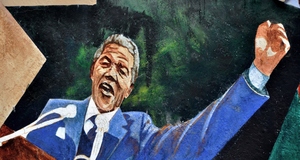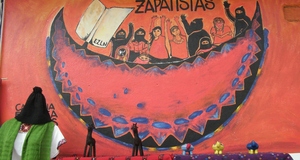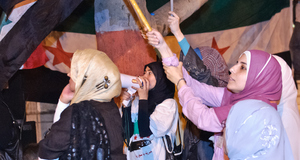Featured Article:Islamic Feminism in Egypt: Toward a Reconceptualization of Social Movement Theories
By
2015, Vol. 7 No. 11 | pg. 2/2 | « Toward a Reconceptualization of Social Movement TheoriesSo far in this paper, I have turned to social movement scholarship to discuss a women’s piety movement and Islamic feminism. In this section, I wish to nuance my discussion by making a distinction between feminism and women’s movement. Even though Mahmood does not reject the term feminist for herself, her ethnography of women’s piety movement in Cairo is not a feminist enterprise per se in the sense that it forces us to rethink notions of agency and freedom inherent in feminist discourse. Concerned that she might project her own political views onto the women participating in the da’wa movement and thus interpellate them into a reality that is not theirs, she took a cultural relativistic stance. Quoting Lila Abu-Lughod, Mahmood shares the former’s concern of “misattributing to [women’s instances of resistance] forms of consciousness or politics that are not part of their experience – something like a feminist consciousness or feminist politics” (2005, 8). She thus develops a new theoretical prism in which she rethinks the making of the subject and ethics. Indeed, Mahmood argues that “the normative political subject of poststructuralist feminist theory often remains a liberatory one, whose agency is conceptualized on the binary model of subordination and subversion. In doing so, this scholarship elides dimensions of human action whose ethical and political status does not map onto the logic of repression and resistance” (Mahmood 2005, 14). In other words, she argues for a departure from a conceptualization of social change that focuses on visible and obvious sites of resistance to subordination in order to understand a movement that is focused on moral reform and would not be considered political by most scholars. This perspective is shared to some extent by Snow when he points to the fact that some social movement or social movement activity are ignored because “they typically are only indirectly and secondarily politically-oriented, and therefore do not fit neatly under the contentious politics umbrella” (2004, 18). The women participating in the mosque movement are nonetheless asking for a reform of the Egyptian society. Thus if their political project cannot be understood in terms of direct challenge to authority, it can only be understood through an exploration of their ethical practices, i.e. the ways in which they inhabit moral codes (Mahmood 2005, 35).Consequently, in the domains of anthropology and women’s studies, Mahmood’s ethnography of the da’wa movement in Egypt is very provocative as it forces us to question the ways in which the concept of agency is usually tied to the “liberatory impetus of the feminist tradition” (2005, 39). Indeed, what if the actions taken by the women participating in the piety movement constitute a form of freedom? In asking this question, she urges us to rethink with humility the meaning of feminist politics (Mahmood 2005, 38). This echoes Abu-Lughod (2002) who is concerned with the arrogant western rhetoric of “white men saving brown women from brown men” (Spivak 1988) and the violence inherent in the projection of particular discourses on people who might have other desires or other ideas of what constitutes freedom. I would argue that Mahmood’s ethnography of a piety movement is equally provocative for social movement theories in sociology and political science. Indeed, the blurring of the secular and religious distinction in the movement she analyzes reinforces the scepticism Snow expresses regarding the theoretical distinctive traditions in the analyzing of social movements versus religious movements. He rightly asks “why literature on religious movements and political movements typically glided by each other, much like two vessels passing on a fog-ridden evening, with only the vaguest acknowledgment that both might be trawling in the same channel” (Snow 2004, 19). This is why Snow defines social movements as collective challenges to decentralized systems of authority that do not necessarily target the state. Accordingly, social movements encompass cultural and religious movements as well as everyday routine forms of action and resistance. As Mahmood’s ethnography has illustrated, social movements are transformative both at the level of the individual and the society because they create spaces for political awakening, empowerment and consciousness raising. However, because Mahmood’s thinking is greatly indebted to Talal Asad’s work, and particularly his concept of religion as a ‘discursive tradition’ (Mahmood 2005, 17), her ethnography complicates further Snow’s call for an encompassing definition. Indeed, for Asad (2002) the very categories ‘secular’ and ‘religious’ are discursive constructs which stem from historical narratives. In other words, secularism and religion are two sides of a same coin; they are the by-products of secular discourses of modernity which created the very categories of ‘secular’ and ‘religious’. He thus refuses to confine the ‘secular’ and the ‘religious’ into essentially fixed categories (2003, 25). As a result, Asad’s conceptualization of the religious and the secular calls into question the most basic assumptions about the use of the adjectives ‘religious’ and ‘secular’ in academia. Consequently, I dare ask the following question: if secularism and religion are the products of the same historical set of discourses anchored in Western history, what is the relevance of distinguishing religious movements from social movements? Aren’t they just “ideologically structured action” (Zald 2000) that seek social change and that make sense in their own cultural and social context? ConclusionWhether the women’s piety movement in Cairo or Islamic feminism may be defined as social movements depends on the theories one refers to. In the first section, I showed how the da’wa movement presented by Mahmood in her ethnography (2005) could be considered a social movement according to the definitions of McCarthy and Zald, cited in Staggenborg (2012). However, various critiques of “social movements as structured preferences” theoretical perspective suggest that the piety movement might be part of a broader Islamic feminist movement. In the second section, I sought to define Islamic feminism, reflecting on how the piety movement could be inscribed in this broader movement. However, Islamic feminism’s status as a social movement is still debated within women’s and Middle East studies. In the third section, I argued that analytical categories like ‘feminism’, ‘secular’ and ‘religious’ are problematic in that they may interpellate the movements studied into a reality that is not theirs. I concluded by arguing that social movement theories are a product of a specific set of discourses inscribed in western academic history that blur the boundary between the religious and the public sphere, leading to the division in academia between the study of religious movement and social movement. This paper aims to be somewhat provocative in its call for a review of our understanding of the ‘social’ in ‘social movement’. In asking whether a religious movement could be considered a social movement, and in showing the ways in which it would be possible to do so it has paved the way for anti-racist and anti-colonial perspectives in social movement scholarship. In the same way in which Islamic feminism asks us to rethink feminism and put into perspective other forms of domination and discourses within academic circles, disrupting the very distinction between social movement and religious movement may lead to a critique of western hegemony in the social sciences. Indeed, the categories ‘secular’ and ‘religious’ which are pitted opposite each other might only make sense in the political landscape of the western modern nation-state. It is perhaps true that the main limitation to Snow’s or Zald’s conceptualization of social movements is that anything can be a social movement; we consequently lose the valuable theoretical and analytical specificities of ‘social movements’ as a field of sociological inquiry. Equally, it is clear that each academic discipline has developed, over time, valuable frames of reference and methodologies. This paper is nonetheless a call for a more systematic questioning of the analytical categories we use in our respective disciplines. It is also a call for more permeable boundaries between academic disciplines. In opening a dialogue between anthropology, philosophy, political theory, sociology, and religious studies, this paper has shown how a multidisciplinary approach that systematically questions the assumptions each of our disciplines strengthens any analysis or theoretical inquiry. ReferencesAbou-Bakr, Omaina. 2012. “Le féminisme islamique et la production de la connaissance: perspectives dans l’Égypte post-révolutionnaire.” In Féminismes islamiques, edited by Zahra Ali, 165-184. Paris: La Fabrique éditions. Abu-Lughod, Lila. 2002. “Do Muslim Women Really Need Saving?” American Anthropologist 104(3):783-790 Ali, Zahra. 2012. “Introduction.” In Féminismes islamiques, edited by Zahra Ali, 13-36. Paris: La Fabrique éditions. Asad, Talal. 2002. “The Consctuction of Religion as an Anthropological Category.” In A Reader in the Anthropology of Religion, edited by Michael Lambek, 114-132. Malden: Blackwell Publishing. Asad, Talal. 2003. Formations of the Secular: Christianity, Islam, Modernity. Stanford: Stanford University Press. Badran, Margot. 1994. “Gender Activism: Feminists and Islamists in Egypt.” In Identity Politics and Women: Cultural Reassertions and Feminisms in International Perspective, edited by Valentine Moghadam. Boulder: Westview Press. Badran, Margot. 1995. Feminists, Islam, and Nation: Gender and the Making of Modern Egypt. New-Jersey: Princeton University Press. Badran, Margot. 2009. “Islamic Feminism: What’s in a Name?” In Feminism in Islam: Secular and Religious Convergences. Oneworld Press. Dekmejian, Richard Hrair. 1980. “The Islamic Revival in the Middle East and North Africa.” Current History 78:169-79. Hirschkind, Charles. 2006. The Ethical Soundscape: Cassette Sermons and Islamic Counterpublics. New York: Columbia University Press. Mahmood, Saba. 2005. Politics of Piety: The Islamic Revival and the Feminist Subject. New Jersey: Princeton University Press. Moghadam, Valentine. 2004. Toward Gender Equality in the Arab/Middle East Region: Islam, Culture and Feminist Activism, HDR Office Occasional Paper. New-York: UNDP. Snow, David. 2004. “Social Movements as Challenges to Authority: Resistance to an Emerging Conceptual Hegemony.” Research in Social Movements, Conflicts and Change 25:3-25. Spivak, Gayatri Chakravorty. 1988. “Can the Subaltern Speak?” In Marxism and the Interpretation of Culture, edited by Cary Nelson and Lawrence Grossberg, 271-313. Urbana: University of Illinois Press. Staggenborg, Suzanne. 2012. Social Movements. Second Edition. Toronto: Oxford University Press. Staggenborg, Suzanne and Verta Taylor. 2005. “Whatever Happened to the Women’s Movement.” Mobilization: An International Journal 10(1):37-52. Zald, Mayer N. 2000. “Ideologically Structured Action: an Enlarged Agenda for Social Movement Research.” Mobilization: An International Journal 5(1):1-16. Endnotes
Suggested Reading from Inquiries Journal
Inquiries Journal provides undergraduate and graduate students around the world a platform for the wide dissemination of academic work over a range of core disciplines. Representing the work of students from hundreds of institutions around the globe, Inquiries Journal's large database of academic articles is completely free. Learn more | Blog | Submit Latest in Sociology |


















